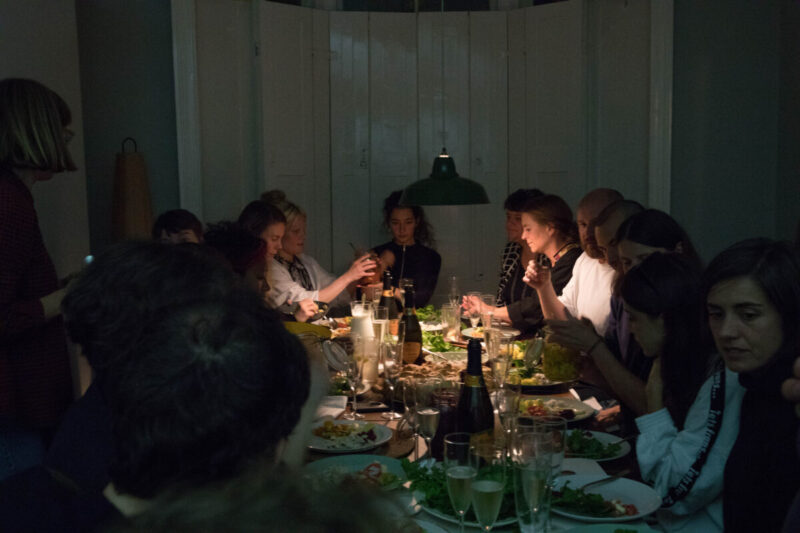Performance as Publishing
Events
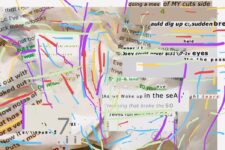
'At Home'
9 March – 28 September 2019
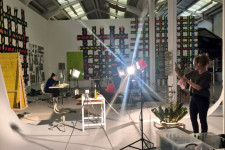
Take One / Take Two / Take Three
Eastside Projects / this is tomorrow
4 March – 6 May 2016

Publication: Performance as Publishing | Performance as Sculpture
12 September 2015

Rhythm of Thought
Whitechapel Gallery
12–13 September 2015

A Play for Voices
Three Letter Words, Rochelle School
22 December 2014
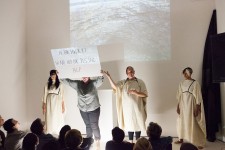
I take an empty space and call it a bare stage
NY Art Book Fair, MoMA PS1
25 September 2014

The flow between the thing and the word
Modern Art Oxford
23 August 2014

Composing Through Words
Het Veem Theater
23 November 2013

Publication: From script to reading to exhibition to performance to print
Rowing
3 October 2013
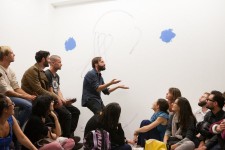
From script to reading to exhibition to performance to print
Rowing
5 September – 6 October 2013
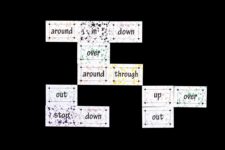
Web commissions
1 July 2013 – 1 July 2014
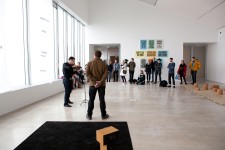
Words to be Spoken Aloud
Turner Contemporary
8–10 March 2013
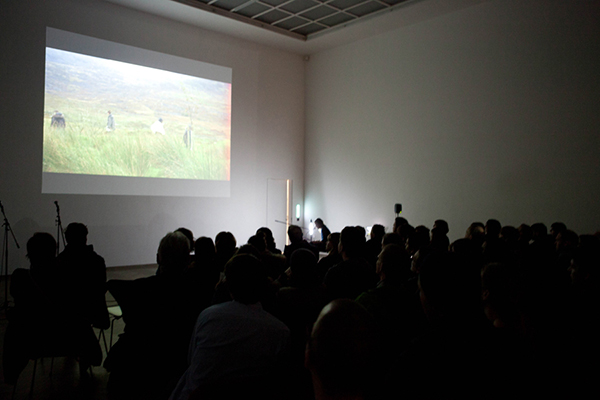
Performance as Publishing
Kunsthalle Basel
13 January 2012
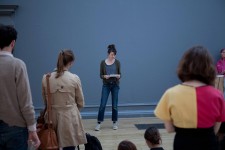
Performance as Publishing
South London Gallery
6 July 2011
Contributors
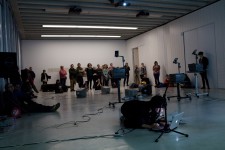
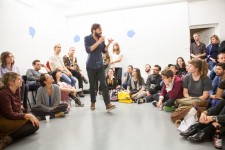
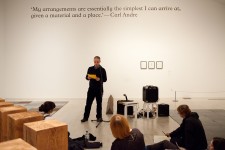
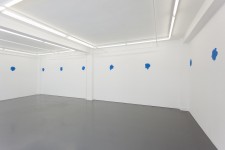
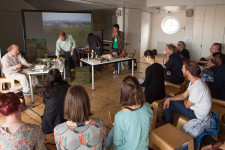
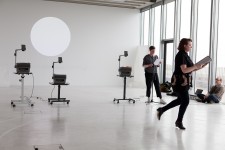
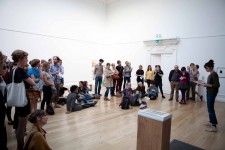

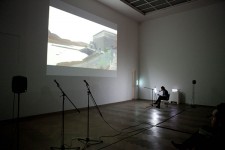
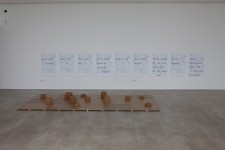

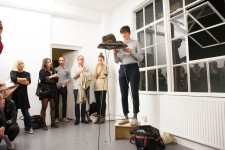
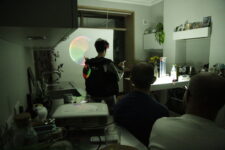
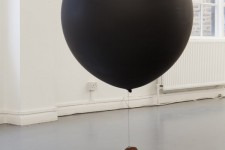
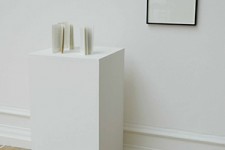
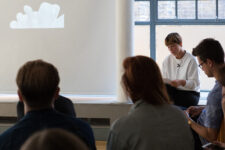

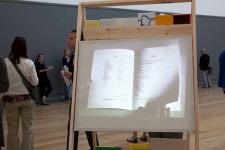
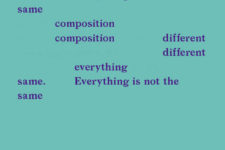
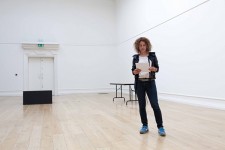

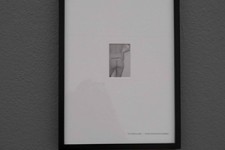


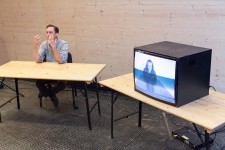

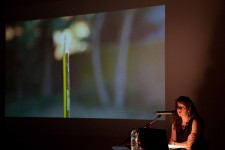
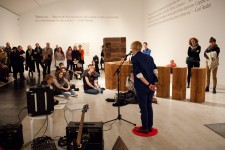


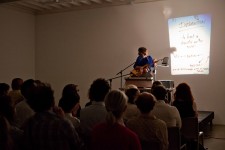
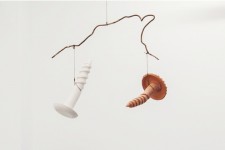
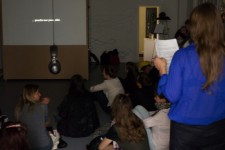
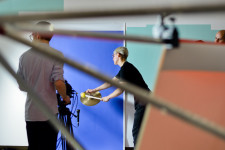
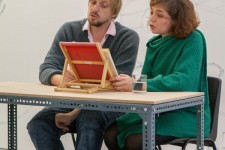
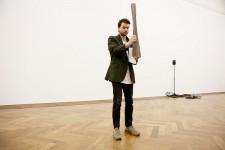


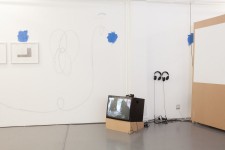
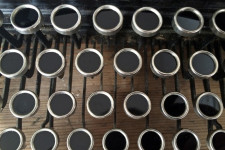


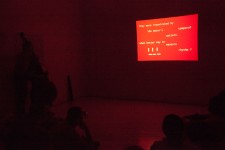
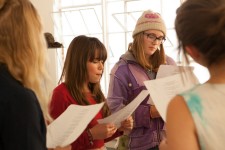
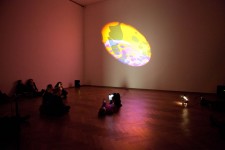
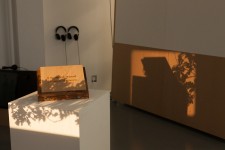

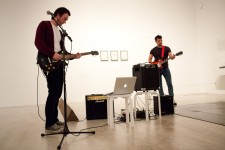

ResearchI
I This section features exhibitions, events, texts and resources relating to the ideas explored by Performance as Publishing.
I, I, I, I, I, I, I, Kathy Acker, ICA, London
“In a 1996 text, Acker wrote: ‘Language is the accumulation of connections where there were no such connections’, and referred to a kind of language ‘that makes webs’. […] Acker is an exceptional figure in late-20th-century Western literature who moved between the avant-garde art and literary scenes of New York, San Diego, San Francisco, Seattle, Paris and London. Through her prolific writing, Acker developed experimental textual methodologies as she distorted language, hybridised fiction and autobiography, ‘plagiarised’ the work of other authors, and introduced maps, drawings and diagrams.”
PaperWork: iilwimi lipsing, serf, Leeds
“I like how it sounds a bit like wimmin. Wimmin-ing. It’s queer and i and i, like we. It’s lots. Very plural-y. And very very and so. Sounds like lips and ellipses and singing and kissing and something about size, like a thing that is small and growing. It’s funny how ppl get upset from internet comments about bad lipsing. Lipsing is verby it’s doing. It’s now. It’s painting the chin and cheeks so the lips stand out. It’s a tongue in another mouth. To go inside your body. The i’s are quite wavy i and i and i and i and i and i. It’s slow then it’s fast. I’m thinking about the shapes the sound makes my mouth. what words do with me. ii is air muscled out. When did I suck that air iin even? iilwimi lipsing is nice to say softly against the hand. Rushy.”
A night of art writing: performance, soundings and screening by artists Carl Gent, Alison Ballance, Uma Breakdown and Halima Haruna with PaperWork Magazine.
The Art of Now: The Joy of Text, BBC Radio 4
“Artist and broadcaster Bob and Roberta Smith, famed for his hand-painted slogans, goes on a personal journey to explore how text and language are used in art.”
ORGASMIC STREAMING ORGANIC GARDENING ELECTROCULTURE
“ORGASMIC STREAMING ORGANIC GARDENING ELECTROCULTURE is a group exhibition looking at practices that emerge between text and performance, the page and the body, combining a display and events programme of historical and contemporary works. It seeks an alternative framework to look at the influence of conceptual procedures as well as experimental writing within contemporary feminist performance practices across visual art, sound and text. The exhibition seeks to highlight these significant trans-historical sensibilities, whilst acknowledging their disjuncts. Each artist brings a particular method, procedure or interrogation to the act of writing or performing text, blurring descriptions such as text, score, work, performance, version and iteration.”
Judith Butler, Notes toward a Performative Theory of Assembly, published by Harvard Press
“Judith Butler elucidates the dynamics of public assembly under prevailing economic and political conditions, analysing what they signify and how. Understanding assemblies as plural forms of performative action, Butler extends her theory of performativity to argue that precarity – the destruction of the conditions of livability – has been a galvanizing force and theme in today’s highly visible protests.”
Doreen Massey, For Space, published by Sage Publications
“What if space is the sphere not of a discrete multiplicity of inert things, even one which is thoroughly interrelated? What if, instead, it presents us with a heterogeneity of practices and processes? Then it will be not an already-interconnected whole but an ongoing product of interconnections and not.”
Rebecca Solnit, Hope in the Dark, published by Canongate Books
“This exquisite work traces a history of activism and social change over the past five decades – from the fall of the Berlin Wall to the worldwide marches against the war in Iraq. Hope in the Dark is a paean to optimism in the uncertainty of the twenty-first century.”
Wysing Polyphonic, Cambridgeshire
“A fully acoustic art and music festival that explores the sonic potential of the voice, instruments and objects:
“SAVORR discusses the nature of sound – its meaning, its potential, its limits and its history…
“Primary artists Frank Abbott, Bruce Asbestos, Wayne Burrows, Rebecca Lee, Alison Lloyd and Reactor come together in a variety of combinations to explore the lines between sound and language, sense and non-sense…
“OUTPOST presents ‘The Temporary Research Centre for Myths, Stories, Tales and Fables’, exploring the nature and themes of stories and how they are remembered, told, and passed on…”
Performing to the Camera, Tate Modern, London
“This exhibition explores the relationship between the two forms, looking at how performance artists use photography and how photography is in itself a performance. It shows how photographs have captured performances […] and ground-breaking collaborations between photographers, performers and dancers. It looks at how artists […] have used photography as a stage on which to perform.”
Blog post #3, Lux artists’ moving image
“Describing our project as ‘performance to camera’ really points to the idea of a performance mediated through a camera and an audience who only sees that end product. It implies conscious decisions about what the camera sees and how this translates to an online audience.”
Blog post #2, LUX artists’ moving image
“On the one hand you have the moment of the event, being there with all your senses. On the other hand you have a privileged view through the eye of the camera, a closeness you wouldn’t have by attending it live.”
Blog post #1, LUX artists’ moving image
“As a reconstruction, the live performance is real and sincere, then there is the knowledge that it is carefully orchestrated, down to the clothes and technology: the once, twice removed, filmed-off-the-telly video.”
Unshelfmarked: Reconceiving the artists’ book, published by Uniformbooks, Devon
“Fifty examples from the iconic to the obscure—accenting the codex’s molecular structure rather than its customary role as a vehicle for text—a critical exposé of multiple types..”
— www.colinsackett.co.uk/uniformbooks.php
The Disembodied Voice, London
“This collaborative research project sets out to investigate the relationship between the disembodied voice and contemporary visual culture. The group explore an array of questions and ideas relating to their individual practices and concepts surrounding the disembodied voice. The group work across different fields, including film making, performance, writing, curating and archiving.”
Plague of Diagrams, ICA, London
“The event explores diagrams as actual/virtual machines that while taking material form and indexing existing relations and objects, point to other arrangements. As Gilles Châtelet declared, diagrams are gestures that invite other gestures. This is a vision of diagrams as abstract machines activated through performance or thought; a notion of diagrams as relays that connect or traverse different times and spaces. It is a conception of diagrams as critical and logical exploratory devices that, in presenting what is not apparent or visible—real abstractions, potential modes of being, hidden relations—paradoxically depend on the register of the imaginary and the inventive production of images, figures and gestures.”
Gertrude Stein Speech Lab Recordings, PennSound, University of Pennsilvania
“These recordings of Stein were made by Columbia Professor of English and Comparative Literature George W. Hibbitt for a record produced by the National Council of Teachers of English, to be distributed to schools on a subscription basis. This series is known as The Contemporary Poets Series, which was started with the recording of Vachel Lindsay by Hibbitt’s colleague W. Cabell Greet in 1931. […] The original recordings were made on aluminum records and were subsequently dubbed to reel-to-reel tapes by the Library of Congress.”
Speaking Parts, Raven Row, London
“Speaking Parts … brings together artists who weave text and language – from poetic prose to the spoken word and scored voice – into the fabric of sculpture, film, painting and performance. The works … are for the most part ephemeral and portable, and depend on the input of the artist, collaborators and/or audience to be fully realised. Each piece has its own temporality, from one-off performance to intermittent activation.”
The Book Lovers
“Here, the concept of the novel is not only confined to the space of the book, but it is expanded in a body of works that are interrelated and find their central reference in its narrative. Introducing traits that are particular of narrative literature into the visual arts implies the accentuation of some features over others. Notions such as narration, fiction, identification, issues of authorship, the very act of reading and the protracted engagement that it involves, as well as strategies of distribution in public space… ”
Unlearning to speak, Kunstraum, London
“Unlearning to speak is the final chapter of Kunstraum’s ongoing Morphologies programme – nine months of exhibitions and events centred on the artistic imagination of language formation and the future potential of new language forms. In science, ‘Morphology’ is a term used for study of structures and forms, ranging from the structure of words to the shape of astronomical objects or biological organisms. Kunstraum’s Morphologies develops out of the idea that the structure of galaxies and the structure of sentences can be described and understood in the same terms.”
An Anthology, Chance Encounters in the Archive, Walker Art Centre blog
“Commonly known as An Anthology of Chance Operations… the full title of this book sprawls across its first five pages: An anthology of chance operations concept art anti-art indeterminacy improvisation meaningless work natural disasters plans of action stories diagrams music poetry essays dance constructions mathematics compositions. It was first published in 1963, edited by La Monte Young and Mac Low and designed by George Maciunas. As the first collaborative publication from these artists, it played an integral role in the formation of Fluxus.”
Under Milk Wood by Dylan Thomas
“To begin at the beginning: It is spring, moonless night in the small town, starless and bible-black, the cobblestreets silent and the hunched, courters’-and-rabbits’ wood limping invisible down to the sloeblack, slow, black, crowblack, fishingboatbobbing sea. The houses are blind as moles (though moles see fine to-night in the snouting, velvet dingles) or blind as Captain Cat there in the muffled middle by the pump and the town clock, the shops in mourning, the Welfare Hall in widows’ weeds. And all the people of the lulled and dumbfound town are sleeping now.”
— www.gutenberg.net.au (script)
— www.grooveshark.com (recording)
L=A=N=G=U=A=G=E Magazine
“Coming on the heels of such movements as the Black Mountain and New York schools, language poetry aimed to place complete emphasis on the language of the poem and to create a new way for the reader to interact with the work […] Key aspects of language poetry include the idea that language dictates meaning rather than the other way around. Language poetry also seeks to involve the reader in the text, placing importance on reader participation in the construction of meaning.”
The Fluxus Performance Workbook, Performance Research e-publication
“The first examples of what were to become Fluxus event scores date back to John Cage’s famous class at The New School, where artists such as George Brecht, Al Hansen, Allan Kaprow, and Alison Knowles began to create art works and performances in musical form. One of these forms was the event. Events tend to be scored in brief verbal notations. These notes are known as event scores. In a general sense, they are proposals, propositions, and instructions.”
The Further Adventures of Parlando, Melisma and the Cookie Monster, Frieze Magazine
“The voice has a material form: air molecules that, when vibrated in the throat, act on the ear. If the voice can be thought of as the original instrument then it follows that it is also the first material we play with. Can we think of the voice as a material like clay, paint or steel? It can certainly be stretched and pulled, modulated over time as timbres shift and accents are gained or lost. We believe in the voice as inalienable, unique like a fingerprint.”
Hey Hey Glossolalia, Creative Time, New York
“A series of events and lectures throughout New York City in May 2008 that [..] express the infinite shades of the voice. […] HEY is a form of greeting in 786 different languages; used especially to call attention or to express interrogation, surprise, or exultation; a slang term used in place of a greeting; a request for repetition or explanation; a meaningless beat marker or extra filler syllable in music, Na na na na, hey hey hey, goodbye; a protest or reprimand, Hey! Stop that!; an expression of surprise, Hey! This is new!; an expression of confusion, Hey! What the fuck?!”
Art as Idea as Idea, an interview with Joseph Kosuth, Frieze Magazine
“Work like mine is concerned with an understanding of language which is pragmatized out of language. […] [Words are] reified; they’re used as objects. Such work begs a larger context, but the work is not reflexive of the larger context, so it deals with neither one nor the other.”
Reading in the Life Drawing Room, Royal Academy Schools, London
“Far from attempting to isolate writing as an autonomous (art) practise, the speakers address the linguistic poiesis (making) as a model, or common denominator for constructions which may bind artistic practises to other things, places and professions. Language is a material that ‘everyone who ever has or is or will be living’ produces for the same means and ends: we all read, write, speak and listen to maintain the inter-dependency of our various occupations.”
The Voice is a Language, Tramway, Glasgow, and Tate Modern, London
“The Voice is a Language is a performance and screening project that orbits the legacy of avant-garde pioneer Meredith Monk. [… It] casts Monk not as a direct influence upon, but an active player within a range of dynamic contemporary practices. The project explores the dispersal of the voice and its relationship to image by assembling a collage of performance, music, video and spoken word.”
Speaking Out: The Spoken Word in Artistic Practice, Tate Modern, London
“This symposium focuses on the use of the spoken word in artistic practice and its manifestations in sonic and audiovisual art works. Taking the lead from the recently published anthology of works Playing with Words: The Spoken Word in Artistic Practice, this event encompasses performances, talks and conversations by artists and researchers who employ spoken words as their material and inspiration.”
Spring, summer, fall, winter, radio arthur, Zurich
[Translated from German] “radio arthur is a platform for auditory art, curated by Franziska Glozer, Lucie Kolb and Valentina Stieger. Launched in 2012 under the title spring, summer, fall, winter, radio arthur broadcast a four-part audio magazine series with a program of audio works, interviews, lectures and audio performances, in which contemporary auditory practices are presented in the discursive context.”
X-Operative, Wysing Arts Centre, Cambridgeshire
“Subverting and playing with how we read, write, collect knowledge and what we think of as a book, specialist East London independent bookshop, publisher, and project space X Marks the Bökship is setting up at Wysing Arts Centre for a special programme that is part exhibition, part events series and part functioning shop […] The title X-Operative is taken from an essay by Ksenia Cheinman, who uses the term to describe common places where the cultural space becomes creative, productive, commercial, domestic, and educational all at once. […] In a selection of four new works on the theme of ‘performance’, Beatriz Olabarrieta has used publications as construction material and as sculptural objects. The carefully selected books are handled in ways which pull out the performative practices of their authors and subjects, with her constructions created as their stage set.”
Exchange, Flat Time House, London
“To speak of the event rather than the object is to deal with what is not made manifest and cannot be measured in either, that opacity which bears an only ever negative relation to its antecedents, as perceptively abstruse as the spread of time itself. An exchange occurs at the reciprocal point of giving over into and against this opacity, a mutual abandonment, of departure and release. This is not what prevents the relationship but what begins the exchange.”
Again, A Time Machine: From Distribution to Archive, published by Book Works, London
“Playing with time and words, and structured around the confluence of archive and distribution, this book presents an assemblage of material that extends Book Works’ touring exhibition. Specifically engaging with the circuits of practice that have materialised in the form of books, writing, magazines, language, spoken word, performative research and archival practice…”
Words in the World, MoMA, New York
“Using language, artists can fluidly translate their works into various mediums and engage in experiments across disciplines. Words in the World generates a ‘live’ response to the possibilities opened up by the relationship between performance art and language, as well as the intertwining of political, poetical, and linguistic structures.”
An exhibition to hear read, published by David Roberts Art Foundation, London
“An exhibition to hear read proposes the notion of speech as material gesture, in which both the texture of the word and its spoken quality are inscribed in space and time through the act of reading. The vocal interpretation of these artworks constructs an abstract and ephemeral reality that can be said to sculpt the spaces in which it occurs.”
Punctuation Marks by Theodor W. Adorno, tr. Shierry Weber Nicholsen
“In every act of punctuation, as in every such musical cadence, one can tell whether there is an intention or whether it is pure sloppiness. To put it more subtly, one can sense the difference between a subjective will that brutally demolishes the rules and a tactful sensitivity that allows the rules to echo in the background even where it suspends them.”
Lecture Performance, MoCA, Belgrade, and Kölnischer Kunstverein
“..the Lecture Performance exhibition is trying to get to grips with questions on power of artistic speech, far-reaching potential of artistic voice, as well as “what is contemporary art teaching us? […] In the classical art tradition, knowledge, cognition and instruction are inseparable from artistic gesture.”
Acts of Voicing, Württembergischer Kunstverein Stuttgart
“The exhibition Acts of Voicing deals with the aesthetic, performative, and political significance of the voice from the vantage point of visual art, dance, performance, and theory. The exhibition centres on the agency and performativity of the voice. The aim is to examine both the resistive and the disciplined/disciplining voice — those voices that are heard and others that are not. Fighting to have one’s voice heard is as much of a topic as the power to silence someone or to force them to speak.”
— www.wkv-stuttgart.de
Volatile Dispersal, Whitechapel Gallery, London
“Showcasing UK artists and writers, this parley-based event speculates on the materialisation and dematerialisation of art writing through newly commissioned works, together with readings drawn from open submission. The event is hosted by Maria Fusco with Book Works and structured around issue three of The Happy Hypocrite, themed ‘Volatile Dispersal: Speed and Reading’.”
Word Event, Kunsthalle Basel
“Word Event is a multi-level cross-sectioned exhibition of contemporary works, events, performances and informances, scores, printed matter and film. Taking George Brecht’s Word Event (1961), a handwritten Event Card, as its starting point, the exhibition attempts to displace itself by purposely seeking out confrontation and synchronization thus landing in the exhibition space as an active dialogue. Word Event points to a possible return of a fluxus sensibility via a new, contemporary, proverbial linguistic turn.”
Various Stages, Kunsthaus Dresden
“The project Various Stages — Bedingte Bühnen focuses on the performative conditions of contemporary artistic production, and makes connections to current practices of performing, staging and acting within the exhibition space. The different formats of exhibition, salon and festival set the conditions of staging and reception of artistic works in motion … In the exhibition, international artists focus on the stage as a sculptural form and create parameters for potential scenarios. What does a stage consist of? What forms can we conceive of in order to create a performance that is personified both on and beyond the stage? Which relationships demand what settings? And what is the role of the observer?”
About
About
Colophon
Performance as Publishing
Nicole Bachmann & Ruth Beale
Contact
info@performanceaspublishing.com
Website commissioned by Wysing Arts Centre with funding from Arts Council England’s Escalator Visual Arts, and designed by An Endless Supply
![]()
![]()
